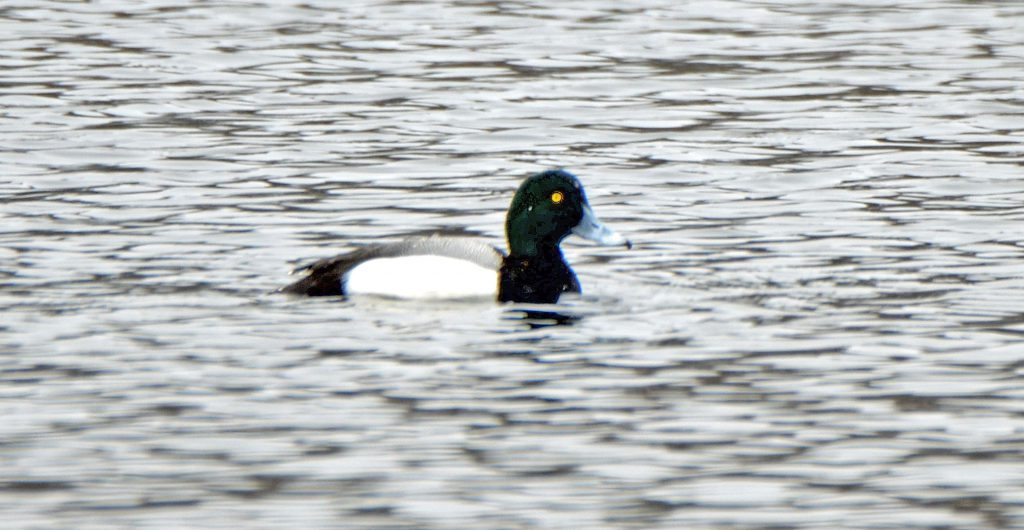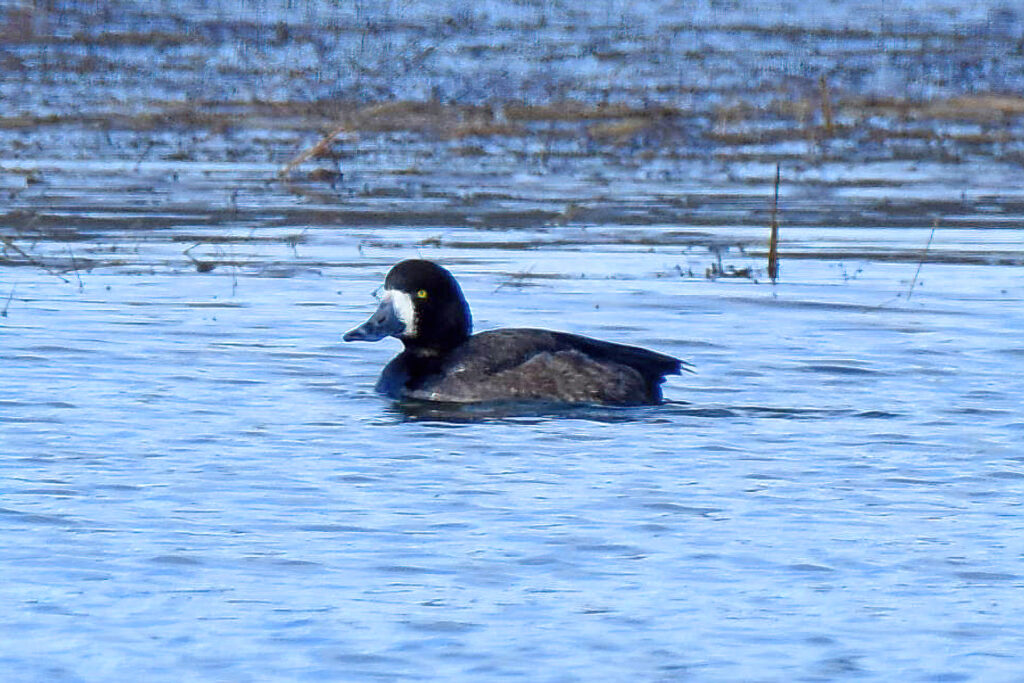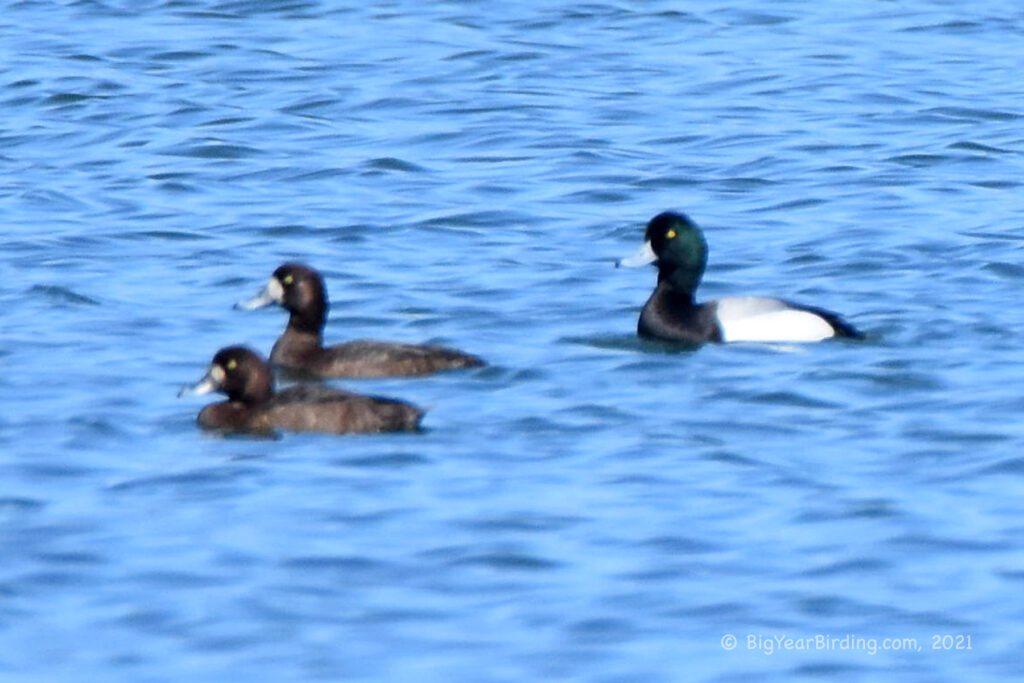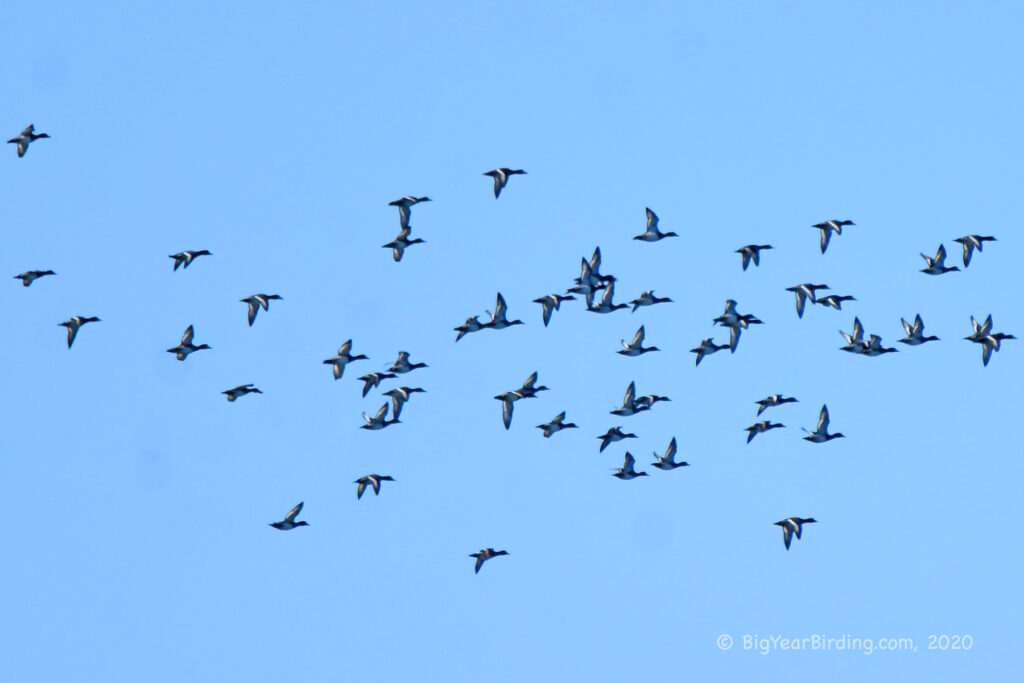
The Greater Scaup, also known as Aythya marila, is a medium-sized diving duck commonly found in North America and Eurasia. It measures between 18 and 21 inches in length and has a wingspan of approximately 33 inches. The male and female Greater Scaup are similar in appearance, with dark plumage on the head and neck, and gray-brown feathers on the body. The bill is blue-gray with a black tip, and the eyes are bright yellow.

One of the distinguishing field marks of the Greater Scaup is the white crescent shape on the back of the male’s neck. This mark is absent in the female. Another field mark is the black nail at the tip of the bill, which distinguishes the Greater Scaup from the Lesser Scaup. The Greater Scaup’s wings are also darker than those of the Lesser Scaup.
The Greater Scaup is a migratory bird, spending the breeding season in the boreal forests of Canada and Alaska. During the winter, it migrates south to coastal waters of North America, from the Aleutian Islands to the Gulf of Mexico, and also to Europe and Asia. The migration of the Greater Scaup is relatively predictable, with most birds departing breeding grounds in September and October and returning in April and May.
In terms of diet, the Greater Scaup is a diving duck that feeds on a variety of aquatic invertebrates, such as mollusks, crustaceans, and insects, as well as some plant matter. They are known to dive up to 40 feet deep in search of food.

The Greater Scaup is considered a species of least concern by the International Union for Conservation of Nature (IUCN). However, the population of Greater Scaup has been declining in recent years due to habitat loss and degradation, pollution, and hunting pressure. Conservation efforts such as wetland protection and management, and reduced hunting pressure have been implemented to help protect this species.

